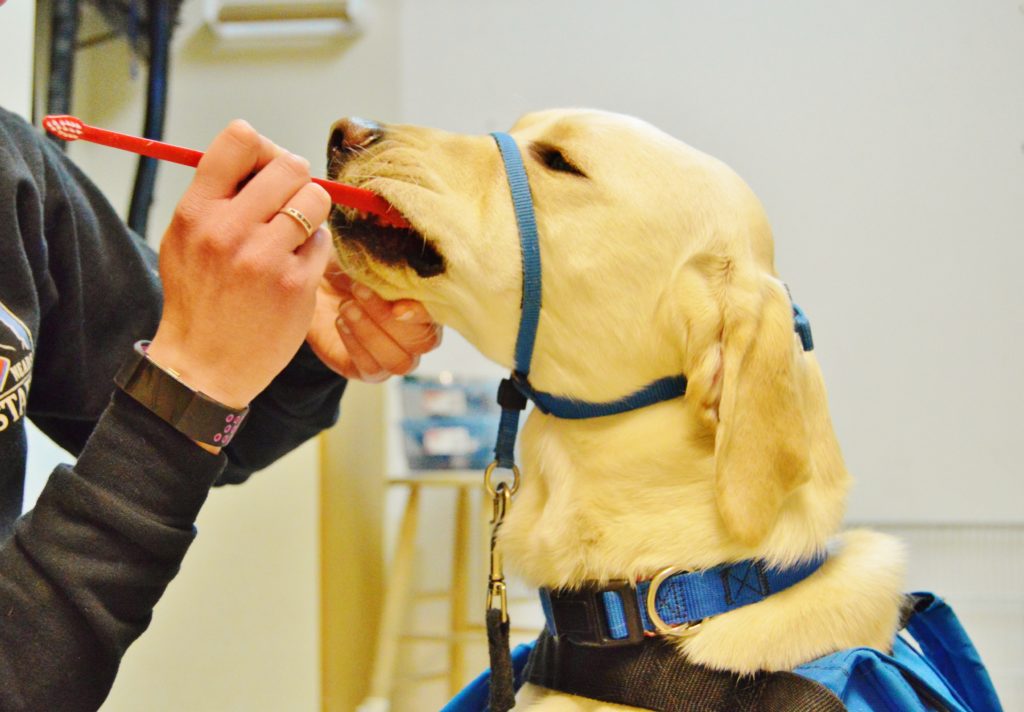Ask the Vet: 5 Things to Know about Pet Dental Health
February 17, 2020
February is National Pet Dental Health month, and while taking care of our pets’ teeth is a year-round effort, this is the perfect time to understand the important role oral health care plays in our pets’ health. Thanks to Dr. Cathryn Cleveland, who volunteers her time and veterinary expertise at NEADS, for this information.
Like people, animals can suffer from gingivitis and periodontal disease. In fact, periodontal disease is one of the most common diseases diagnosed in dogs. It is generally accepted that between 50-80% of dogs have some degree of periodontal disease by age 3. If left untreated, it can cause pain and eventually harm organs like the liver, kidneys, and heart.
The best way to prevent – or at least minimize – dental problems is a combination of at-home care and professional veterinary care.
5 Things to Know about Pet Dental Care
1) Brushing
Brushing is the most important thing you can do to keep your pet’s teeth and gums healthy. Ideally, this should be done every day with a dog toothpaste. Never use human toothpaste.
2) Safe Chew Toys
I recommend that owners avoid toys that can break teeth (which can result in pain and tooth root abscesses). A good rule of thumb is to use only while under supervision items you can bend slightly or indent with a finger nail, for example avoid marrow bones. We’ve seen these break major chewing teeth many times.
3) Regular Examinations and Monitoring at Home
Your veterinarian will perform a basic oral exam during your pet’s annual visit. In between visits, be on the lookout for: tartar buildup, broken teeth, a foul odor from the mouth, excessive drooling, pain when chewing, swelling around the muzzle, and growths in the mouth. Contact your vet if you find any of these problems and schedule a recheck.
4) Dental Exam and Cleanings under Anesthesia
Your veterinarian may decide that a full dental exam is necessary. A full dental exam requires anesthesia and can include a complete evaluation of teeth and gum health, scaling and polishing of teeth, and full-mouth x-rays to assess the health of teeth under the gum line. Significant dental disease can be missed without x-rays, and, therefore anesthesia-free dental cleanings are not recommended by the American Veterinary Dental College (AVDC). Early periodontal disease (gingivitis without significant bone loss surrounding tooth roots on x-ray) can be reversed if caught early and addressed.
5) Tooth Extractions
Extractions are sometimes necessary for the pet’s health and comfort. When teeth are diseased past where a professional cleaning or intervention can reverse or stop the progression of disease, it is best to remove them. But don’t worry. Dogs can eat just fine even if they are missing many, or even all, of their teeth.

